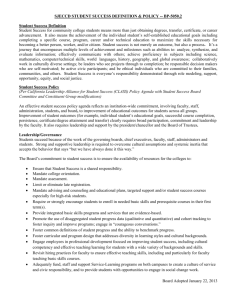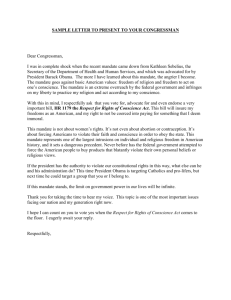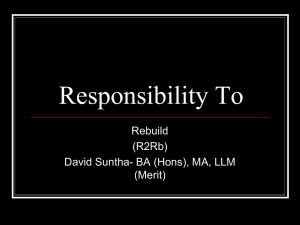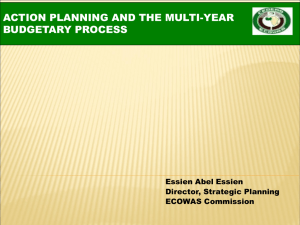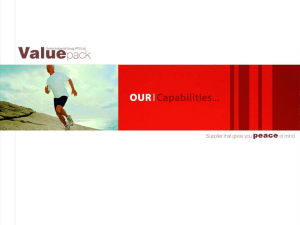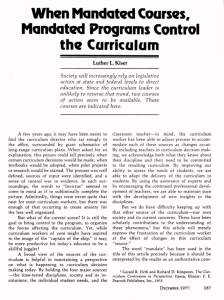Barriers/Solutions to Siting Organic Diversion Facilities Workshop
advertisement
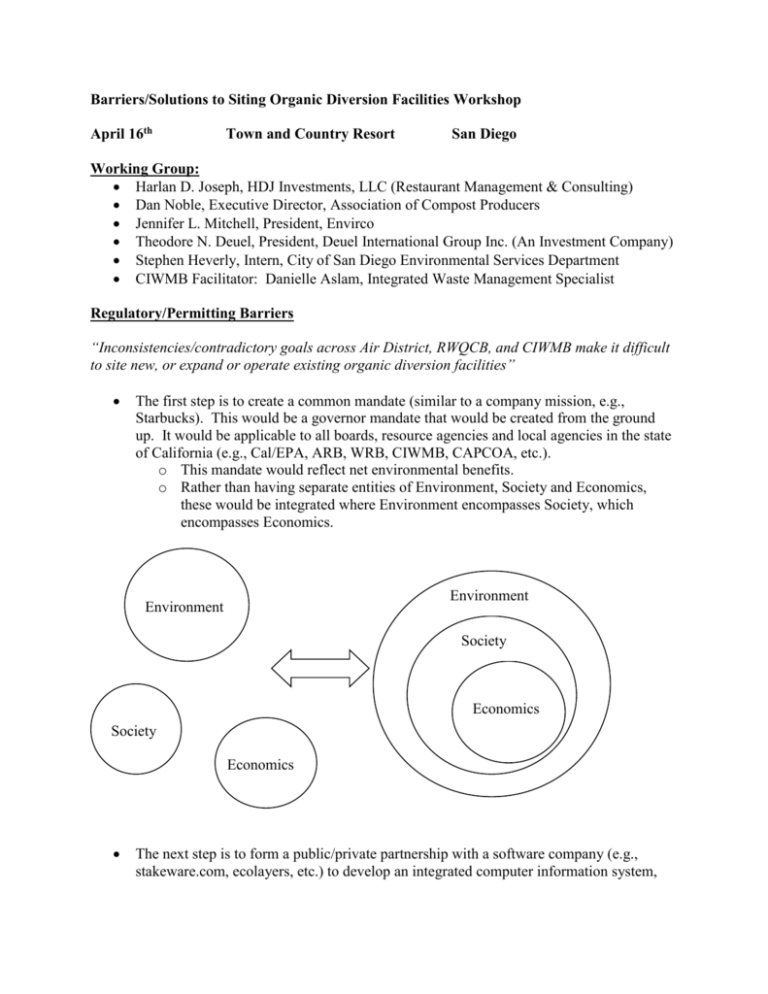
Barriers/Solutions to Siting Organic Diversion Facilities Workshop April 16th Town and Country Resort San Diego Working Group: Harlan D. Joseph, HDJ Investments, LLC (Restaurant Management & Consulting) Dan Noble, Executive Director, Association of Compost Producers Jennifer L. Mitchell, President, Envirco Theodore N. Deuel, President, Deuel International Group Inc. (An Investment Company) Stephen Heverly, Intern, City of San Diego Environmental Services Department CIWMB Facilitator: Danielle Aslam, Integrated Waste Management Specialist Regulatory/Permitting Barriers “Inconsistencies/contradictory goals across Air District, RWQCB, and CIWMB make it difficult to site new, or expand or operate existing organic diversion facilities” The first step is to create a common mandate (similar to a company mission, e.g., Starbucks). This would be a governor mandate that would be created from the ground up. It would be applicable to all boards, resource agencies and local agencies in the state of California (e.g., Cal/EPA, ARB, WRB, CIWMB, CAPCOA, etc.). o This mandate would reflect net environmental benefits. o Rather than having separate entities of Environment, Society and Economics, these would be integrated where Environment encompasses Society, which encompasses Economics. Environment Environment Society Economics Society Economics The next step is to form a public/private partnership with a software company (e.g., stakeware.com, ecolayers, etc.) to develop an integrated computer information system, which could be used by all parties involved to ensure net environmental benefits are achieved. The technology for this already exists. o This software would keep track of all projects and stakeholder input, would provide one point of contact for permitting and can have local, regional and state levels. Local governments, businesses and others can have plug-in subscriptions to the information system. The costs would likely be lower than other alternatives and would attract these entities to subscribe. The common mandate would be used as a benchmark for all activities. Outcomes: o Creates visibility of issues at hand so that problems are easily defined and can thus be solved more easily. o Also solves ADC and market problems because net environmental benefit is realized. Other Regulatory/Permitting barriers are also solved by this system Economic Barriers “Capital cost too high” Full cost accounting (considers fees and subsidies) will be included in the model software, which would include net environmental benefits, true cost accounting for the permit process and will be reflective of local conditions. Also, performance-based regulations (e.g., emissions standards) rather than rules-based (e.g., BMPs, BACTs) would help with capital costs. Once the investment community perceives a low risk because of the clear mandate, coordinated information system and performance-based regulations, they would likely invest more freely. This is true for conversion technology as well as composting facilties. Land Use Planning Barriers “Community opposition (NIMBY)” The Ecolayers software mentioned above was developed by NGO’s to specifically work with communities/stakeholders. Change CIWMB’s name to: California Integrated Resource Management Board Educate public about the benefits of organics recycling: o Creation of green jobs (rather than brown jobs) These jobs can not be exported, so they are more economically sustainable. o Cleaning up the environment o Etc. Educational campaigns at the local level targeting specific groups Zoning at local level for green companies Work with Utility Branding Network and Zero Waste Community on these efforts. Develop a Logo for materials that are recyclable (e.g., blue) and compostable (e.g. green) and educate public about the 3-bin system.
